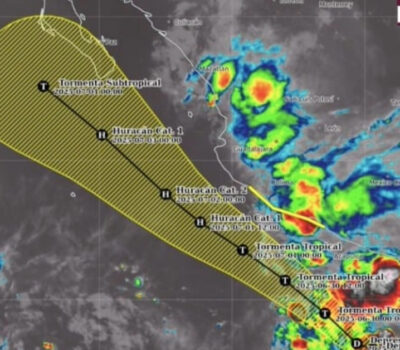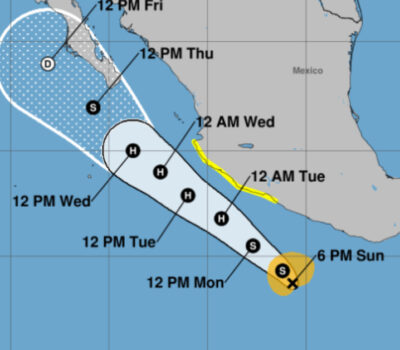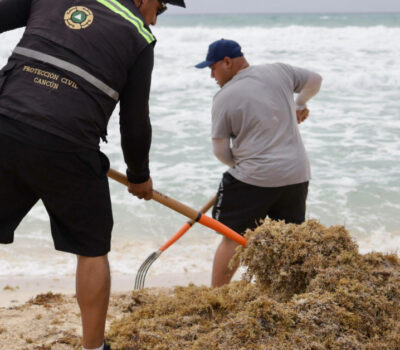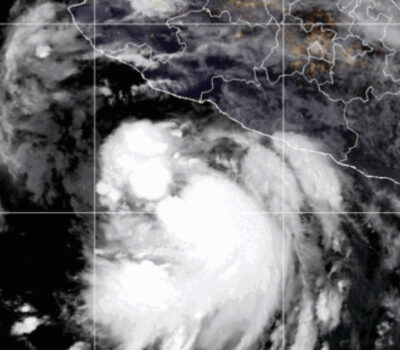Edgardo Galvan watched as two gravediggers shoveled muddy soil from his father’s grave until they reached a set of bones mixed with wood chips, the remnants of the coffin he was buried in seven years earlier.
The gravediggers placed the bones in a black plastic bag and handed them to Galvan, who planned to cremate them and put the ashes in a small crypt the family bought in a church.
“I’ve had to go through two difficult moments, first burying him and now unburying him,” the 42-year-old carpenter said as he stood in the San Isidro cemetery in the Mexico City borough of Azcapotzalco.
Mexico’s capital is rapidly running out of gravesites and many residents of this growing metropolis of 9 million people have to exhume the remains of their loved ones once the burial rights expire to make room for new bodies. Officials say there is no public land available for new cemeteries.
The lack of cemetery space has prompted the city’s legislative assembly to propose a law that would reduce the time a body can remain in a grave and encourage people to cremate the bodies of their love ones, a move that critics say will threaten Mexico’s long and rich traditions surrounding burying and celebrating the dead.
Assemblywoman Polimnia Sierra, who proposed the law, said the city’s 119 cemeteries only have 71,000 gravesites available and that each year about 30,000 people die in the capital.
“In less than three years (the cemeteries) will be completely filled,” said Sierra in defense of the law which was passed by the assembly this summer but sent back by Mayor Miguel Angel Mancera who wanted changes to its language. A vote on the revised law is expected soon.
It would require that the city government educate people about cremation as an option and build more crematoriums — there are currently just two public crematoriums. It would also lower the maximum gravesite tenure from 21 years to 15 years, as long as cemetery rights are paid.
Complicating matters is that the regulations aren’t applied consistently, with borough officials administering and sometimes setting their own grave time limits in the cemeteries in their areas. Sierra said there have been cases of cemeteries exhuming graves to bury someone else in as little as one year.
Once exhumed, families commonly put the remains in above-ground niches offered by the cemetery, cremate them, bury them in a different cemetery or if no one claims the remains, they are re-buried at the same grave but underneath the coffin and tombstone of the new body.
While other countries around the world reuse graves, it is a sensitive issue in Mexico where celebrating the dead is still a living part of the culture.
The law has become a tug-of-war between government officials in the center of this sprawling metropolis, which is increasingly growing vertically, and residents of its outer, more rural boroughs who preserve pre-Columbian traditions.
The law’s opponents say above-ground mausoleums and crypts don’t allow for the traditional Day of the Dead celebrations on Nov. 1 and 2, when Mexicans honor the dead by building elaborate altars on their tombstones, laden with candles, flowers, colorful sugar skulls and the favorite food and drink of the departed. Entire families gather in cemeteries brightened by flickering candles to pray and share memories of their loved ones, whose photos sit on the graves.
Jesus Guzman, a member of the Autonomous Union of Native Towns and Neighborhoods of the Federal District, said many indigenous Mexicans prefer burial and are reluctant to accept cremation.
“Their worldview is not the same as ours,” said Guzman of city officials backing the law. “Can you imagine that with the stroke of a pen they can erase All Saints Day and the Day of the Dead? They have no idea what they are doing.”
In June, his group blocked a major avenue to protest the law.
In Mexico City’s outer boroughs it’s still common to see a nightlong wake being held on the patio of a home, then mourners carrying the coffin on their shoulders through traffic-clogged streets toward the cemetery. The processions are often accompanied by brass bands or mariachis.
“What really bothers us is that they don’t respect our loved ones. They come a year or two after we bury them, take them out of the grave and bury whoever is next,” said Jose Jimenez, who helps administer the San Francisco cemetery in the borough of Magdalena Contreras. “We won’t allow them to take away our resources, our cemetery.”
At the Azcapotzalco cemetery where Galvan’s father was buried, 63,000 older gravesites are sold in perpetuity — burial time limits were established in 1984. Another 22,000 have limited tenure. Some graves have fresh flowers, but many others are overgrown with weeds. Records are kept in old ledgers, some barely legible, and officials say it’s unclear how many graves have been abandoned.
Like many Mexicans, Galvan says mausoleums and crypts still seem like a foreign option to him.
His family has bought a crypt in a church in Mexico City’s Tlatelolco neighborhood. Galvan said his mother wants her ashes, her husband’s ashes, and two of her children’s ashes, including his, to be in the same crypt.
“I told her that’s fine, my ashes can be in that crypt but first I want to be buried, I want to be in the ground for at least a year,” he said.
Edgardo Galvan watched as two gravediggers shoveled muddy soil from his father's grave until they reached a set of bones mixed with wood chips . . .











